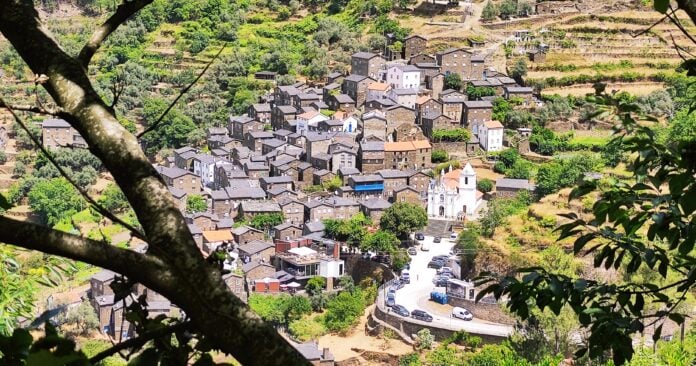Indulge in the irresistible allure of traversing the myriad pathways that wind through quaint villages, offering a spectrum of experiences from leisurely strolls to exhilarating rides or scenic drives. Immerse yourself in the captivating vistas that unfold before your eyes and seize the opportunity to savor the authentic flavors of the region’s most cherished traditional products.
A Bit of History
These villages, though mere specks on the world map, wielded profound influence, altering the destiny of a nation. Nestled strategically alongside the Spanish border, Portugal’s Historic Villages stand as a testament to the foresight of generations of monarchs committed to territorial defense.
King Afonso I, architect of the County of Portugal, and D. Dinis, the monarch who inked the treaty defining the enduring border with Spain, spearheaded the fortification and settlement of this crucial area.
Over the centuries, rulers erected castles, fortified walls, bestowed charters, and granted privileges to those who took residence in these contested regions. The battles fought in these lands prompted the swift construction of chapels and churches, each victory giving rise to legends that bestowed a mystical aura upon the Portuguese Beira, echoing the rich tapestry of Portugal’s history.
Echoing the unity forged in medieval times against external threats, today’s challenge lies in combating the relentless march of time and the specter of desertification. The Historic Villages Network has not only undertaken the physical restoration of facades, roofs, urban infrastructure, and monuments but has imbued these villages with renewed symbolic significance.
This revitalization has catalyzed economic growth, empowered local communities to actively participate, and injected vitality into the region, creating a harmonious blend of the weathered faces of longtime residents and the eager countenances of adventurous visitors seeking to explore the soul of the Portuguese Beira.
For Both Adventurers and History Buffs
For those with an adventurous spirit and a penchant for history, the Historic Villages beckon from within the embrace of the natural wonders of Portuguese Beira, nestled proximate to Serra da Marofa, Serra da Estrela Natural Park, Gardunha, and the Natural Reserve of Malcata. Succumb to the allure of the myriad trails weaving through these villages, whether on foot, horseback, or by car. Let the breathtaking panoramas inspire you as you savor the region’s time-honored delicacies. The cheese, wine, kid, lamb, sausages, and olive oils of central Portugal encapsulate its rich history.
Explore the historical centers, where religious heritage, popular architecture, palaces, and manor houses await your exploration. Allow the epochs of Medieval Portugal, the Age of Discoveries, the Restoration, the French Invasions, and even prehistory to unfold before you. The allure is such that you need not absorb everything at once – we are confident that, in due time, the call of the Historical Villages of Portugal will beckon you back for another enchanting journey through time.
So, What’s the Plan?
Great question! Even though there are only twelve villages in this network, they’re well worth your time. So, with that in mind, I divided them into three groups, each with four villages, according to their location and proximity. This way, you can split your visit into three days and enjoy this region to the fullest.
Northwestern Villages
This group of villages is perfect to get acquainted with the concept of the Historical Villages and to build up your stamina, as you’ll need to walk up quite a few hilly streets!
Linhares da Beira
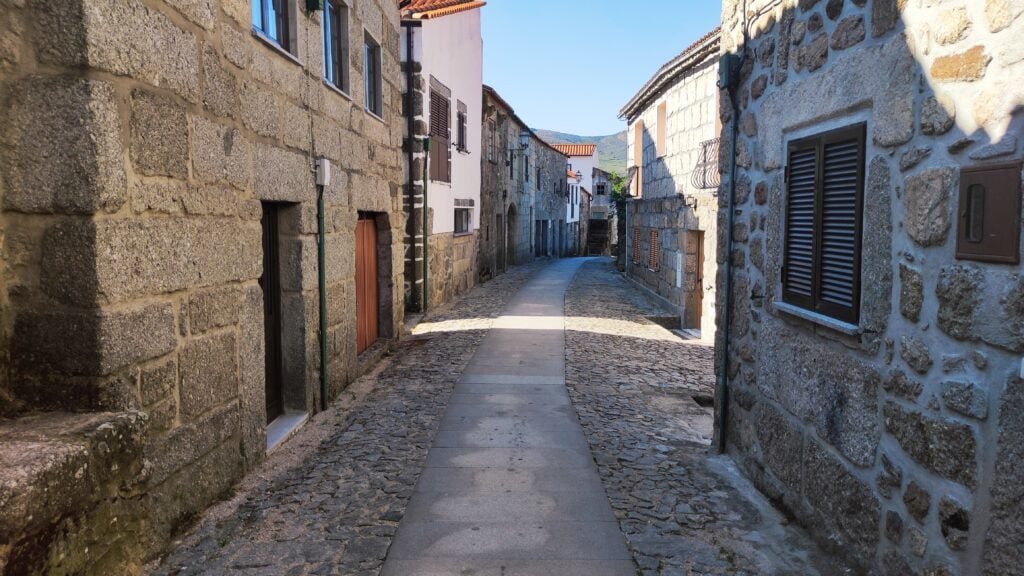
Our journey starts at Linhares da Beira. It’s a bit of a drive if you’re coming from Lisbon, but it’s well worth it. Follow the A1 all the way to Coimbra and, right after passing it, switch to the IC3. After Viseu, switch to the A25 highway and, in Celorico da Beira, take the N17. Linhares da Beira should be easy to find from there.
Located in the heart of the Serra da Estrela Natural Park, this medieval village, which received its first charter from King Afonso Henriques in 1169, is a veritable open-air museum and wandering through its streets and alleys, lined with granite houses, is a real journey back in time.
Among the must-see places are its majestic castle, the Mergulho fountain and medieval forum, the Casa do Judeu, the Old Guest House, the main church, the pillory and the Old Town Hall and Jail.
Fun fact, Linhares da Beira is considered the Paragliding Capital of Portugal because it has excellent conditions for practicing the sport. So, if you like strong emotions and little gravity, go for it!
Trancoso
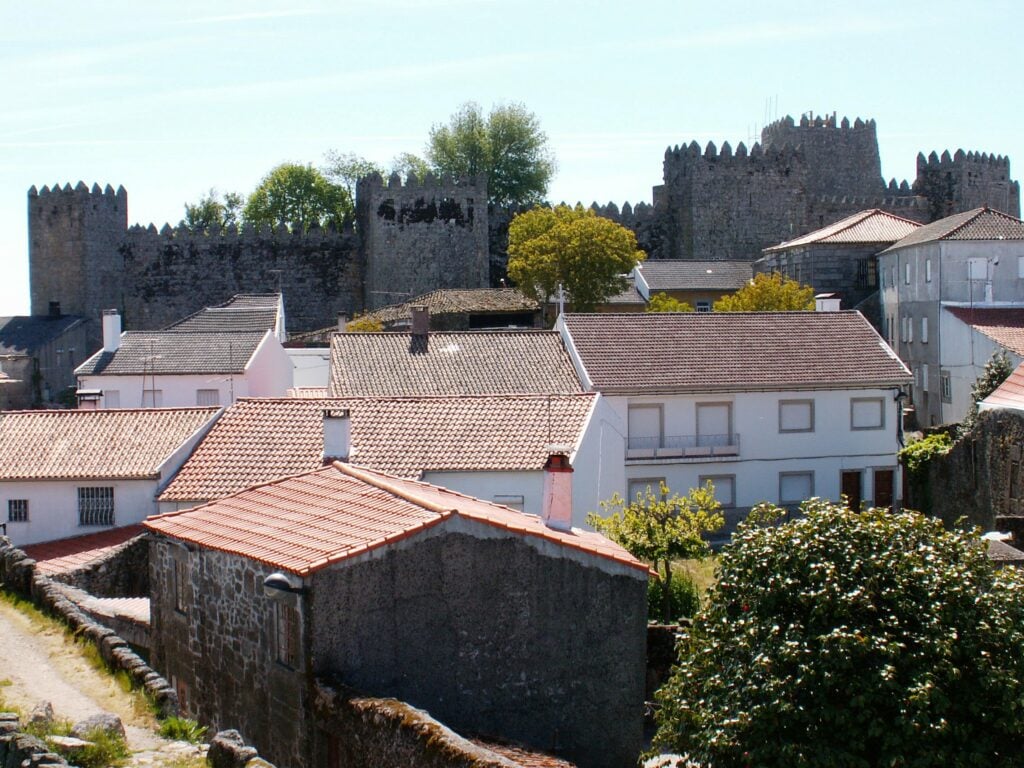
Go back to Celorico da Beira and hop back on the A25 highway. Then take the IP2 headed north for about 20 minutes. Trancoso should be on your left.
Due to its privileged location between the Douro, Côa and Mondego rivers, it has been the scene of disputes since time immemorial. It was considered central to the Romans, was a bastion in the Christian reconquest and the scene of the famous Battle of Trancoso, in which the Portuguese forces imposed a heavy defeat on the Castilian forces, which served as a prelude to the Battle of Aljubarrota.
Start your visit by crossing the admirable Porta d’El Rei, the perfect starting point for exploring the walled historic center of Trancoso, which in the distant year of 1281 witnessed the marriage of King Dinis to Isabel of Aragon.
Take your time wandering through the medieval streets, let yourself be dazzled by the magnificence of the Town Hall and the Ducal Palace, admire the elaborately carved Pillory, visit the beautiful Churches of São Pedro and Santa Maria, cross the ramparts without trepidation through the Prado, Carvalho and Traição Gates, discover Trancoso’s Jewish heritage at the Isaac Cardoso Jewish Culture Interpretation Center, try to find the tiny Boeirinho and end your visit on a high by climbing up to Trancoso Castle, one of the oldest in Portugal.
Marialva
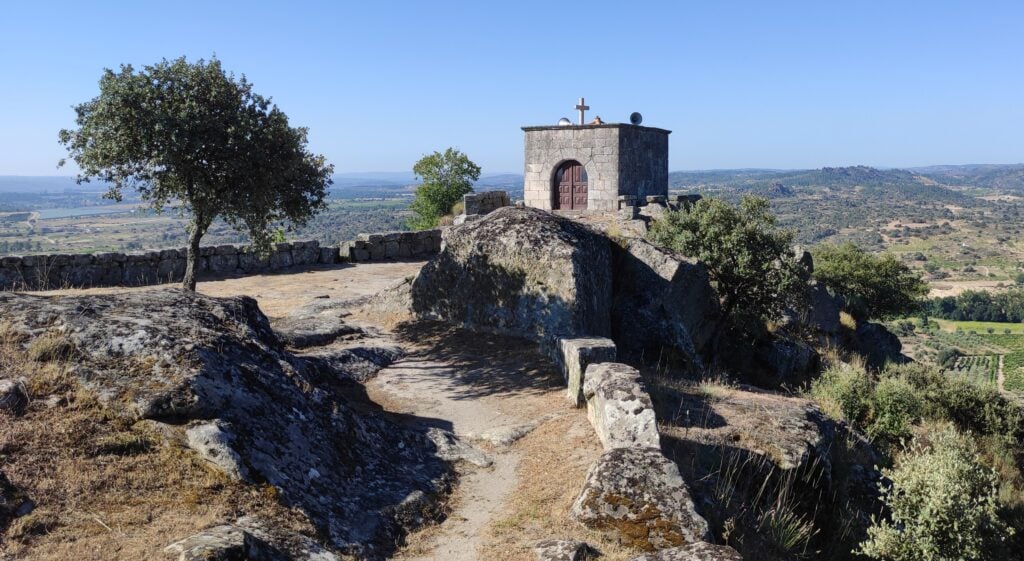
From Trancoso, it’s pretty easy to get here. Just take the IP2 for 20 minutes.
Marialva is closely linked to the tragedy of the Távoras because, at the time of the regicide against King José I, its mayor was the Marquis of Távora. This led to the population abandoning the citadel that existed inside the castle. This is precisely why the citadel is in ruins today. And so that you can better feel the weight of history, the decision was taken not to restore them.
Believe me, walking through the narrow streets of the village and visiting the ruins of the citadel inside the towering castle – balanced on top of a granite cliff – will almost instantly take you back in time.
Don’t forget to visit the Church of Santiago, with its Manueline portal, the Church of São Pedro, the 16th century Cistern, the old Town Hall and the Manor House of the Marquises of Marialva.
Castelo Rodrigo
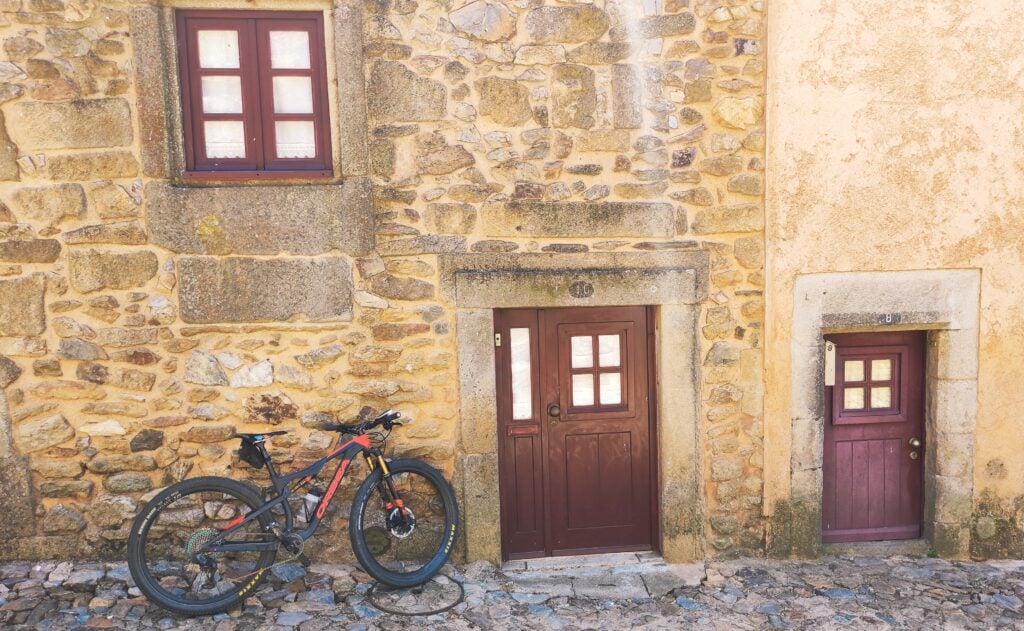
Castelo Rodrigo looks like something out of a medieval movie. When you see its old walls in the distance, with their imposing turrets, and the golden houses perched on the hill, it’s love at first sight. It’s really easy to see why it was considered one of the 7 Wonders of Portugal.
Crossing the emblematic Porta do Sol is like stepping through a portal between two worlds. Castelo Rodrigo has more than a handful of monuments worth visiting. Among the most emblematic are the castle, the towers and turrets, the pillory, the medieval cistern, the main church and the ruins of the Cristóvão de Moura Palace.
But the best thing about Castelo Rodrigo is wandering around its medieval streets and discovering the little details that give it color, such as the Hebrew inscriptions and crosses carved on the doorposts and staves, marks of the presence of Jews and new Christians that time has not erased.
Northeastern Villages
One of the most unique fortresses in Europe, a walled village nestled atop a cliff, and the birthplace of the man who, over five centuries ago, discovered Brazil, propelling Portugal into a whole new era. These are just some of the highlights of this group of villages.
Almeida
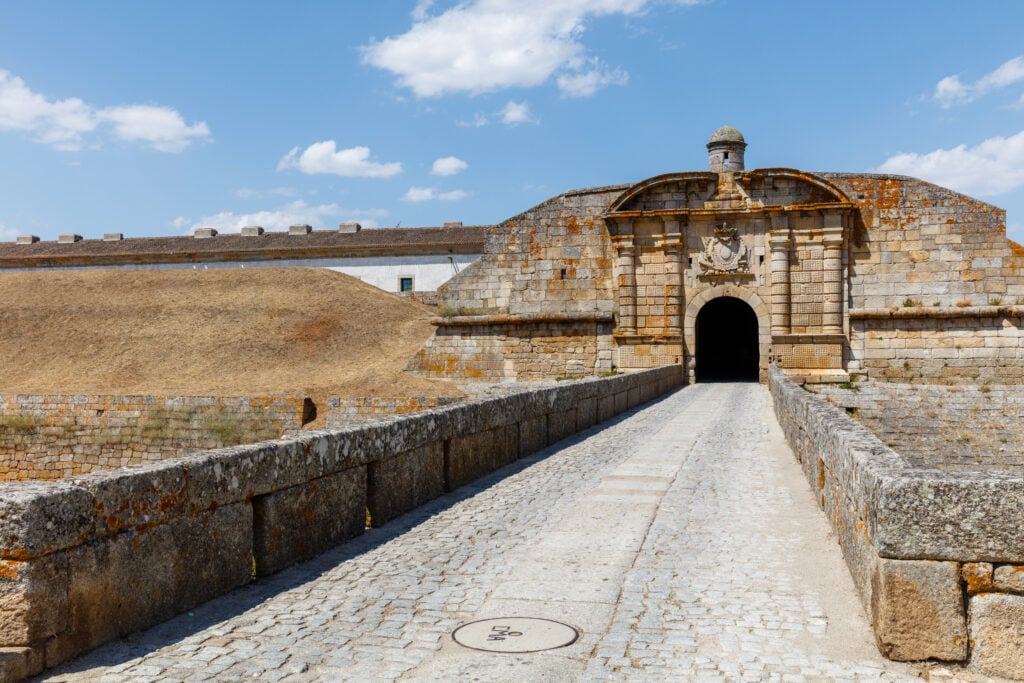
You’ll need to head southeast to get to Almeida. Take the N102, N324, and N340. After just one hour, you’ll arrive in Almeida.
When seen from the air, Praça Forte de Almeida looks like a 12-pointed star, as many as the bastions and ravelins that surround it.
Needless to say, Almeida has been the scene of epic battles, one of the most famous being the “Siege of Almeida” in 1810, during the Third French Invasion. If you visit the city in August, don’t miss the historical re-enactment of this event. It’s best to bring earplugs, as the noise of the cannons is deafening.
Almeida is full of points of interest and so I highly recommend that you set aside a whole afternoon to visit the fortress, the Casa da Roda dos Expostos, the Casa dos Governadores, the castle ruins, the Picadeiro d’el Rei, the Paços do Concelho, the Casamatas, the Quartel das Esquadras, the main church, the Misericórdia church, the clock tower, the old cemetery and the Historical-Military Museum.
Castelo Mendo
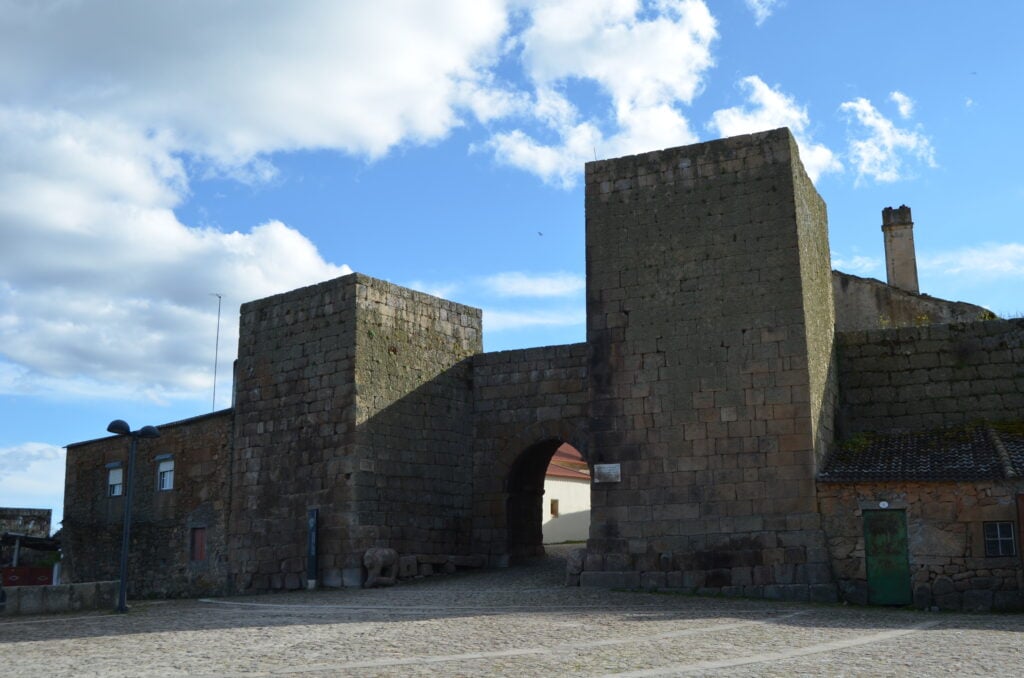
Follow the N340 headed south and you’ll arrive in less than 30 minutes.
The devastating earthquake of 1755 may have knocked down the eight towers that protected the citadel and the walled village, but it didn’t dent the charm of Castelo Mendo. And you only have to pass through the arch of the Porta da Vila to see for yourself.
Stroll down the pretty right-hand street, observe the precious details of the Manueline houses, let yourself be amazed by the beautiful Pelourinho square (home to the Mother Church and the Alpendrada Balcony), visit the community oven and the old town hall, courthouse and jail (a real three-in-one) and climb up the medieval sidewalk to the highest point of the village to see the ruins of the Church of Santa Maria do Castelo and the old castle gates in situ.
Portugal’s first official fair was held in Castelo Mendo at the behest of King Sancho II. As such, every April Castelo Mendo organizes one of the best Medieval Fairs in Portugal. The setting is simply perfect!
Sortelha
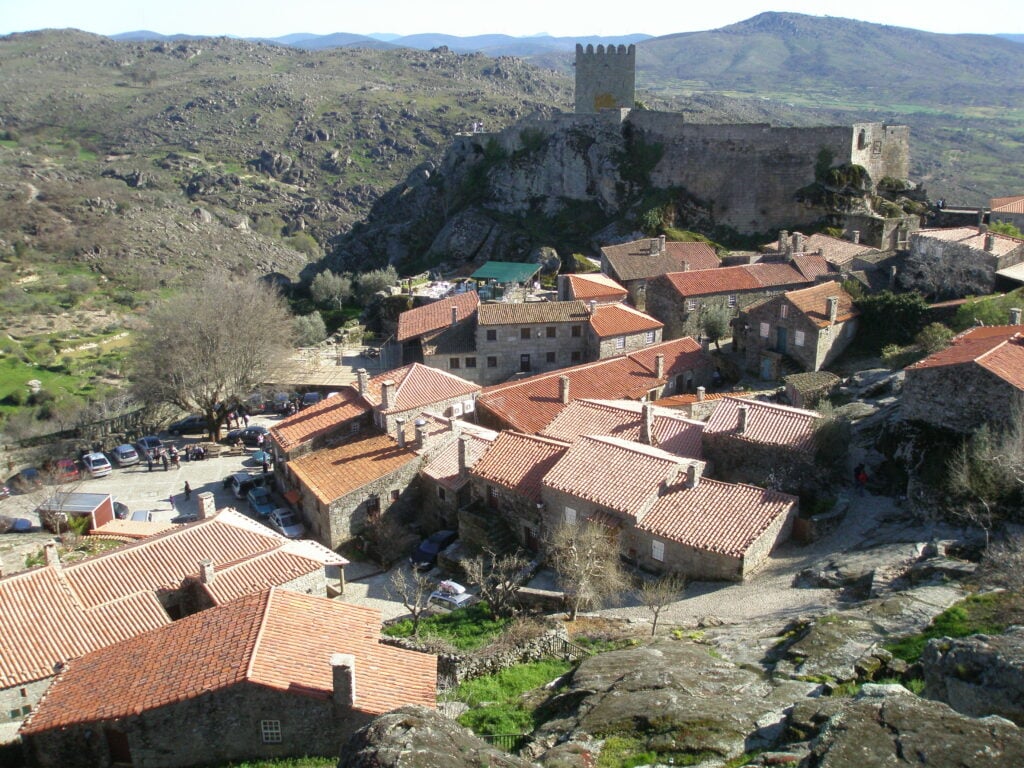
Another straightforward drive. Just take the N324 headed south and you should start seeing Sortelha in the distance after about 45 minutes.
Sortelha is not only one of the best-preserved historic villages, but it also has a simply stunning landscape. From the top of its towers and walls, you get simply overwhelming views over the rugged Beira landscapes.
As you pass through the walls, which have protected it for centuries, you’ll feel like you’re in a real open-air museum. Walk slowly and savor the nostalgic medieval atmosphere of the village.
Among the many places of interest you can visit within the walls, the highlights are the impressive keep, the wall gates, the Facho tower, the main church and bell tower, the Casa dos Falcões, the town hall and jail in Largo do Pelourinho and the Arab House.
Outside the walls, I recommend visiting the Misericórdia Church and Hospital and looking for the famous Cabeça da Velha and Duas Pedras Beijoqueiras stones.
Belmonte
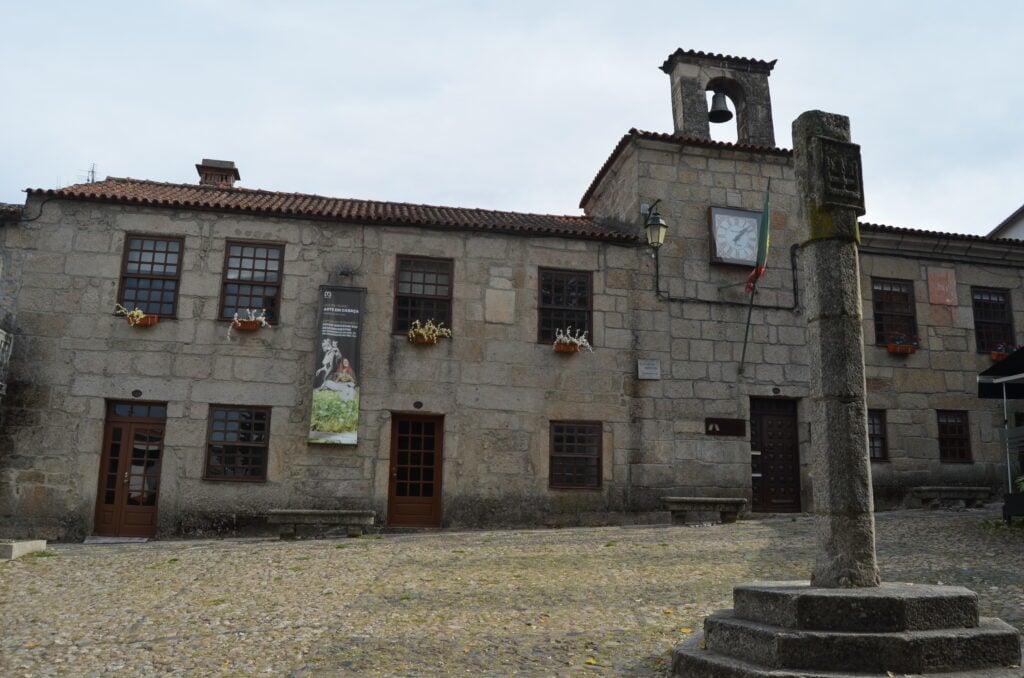
Belmonte is only 20 kilometers away from Sortelha, so you’ll see directions everywhere. Just head west!
In addition to its strong connection with the Discoveries – as the birthplace of Pedro Álvares Cabral, the Portuguese navigator who discovered Brazil in 1500 – Belmonte also has a huge connection with the Portuguese Jewish community and even belongs to Portugal’s Jewish Quarters Network.
Learn all about the history of the powerful Cabral family and the discovery of Brazil by visiting Belmonte Castle (with its Manueline window), the Church of Santiago and Pantheon of the Cabrais and the modern Museum of the Discoveries, housed in the Solar dos Cabrais.
Take a trip to Largo do Pelourinho to see the historic Paço do Concelho and wander through the cobbled streets of the Jewish quarter. Visit the Jewish Museum and the Bet Eliahu Synagogue. A real journey through the past (and present) of Portugal’s largest Jewish community.
And make sure you visit the nearby Centum Cellas, in Colmeal da Torre. The most recent excavations say that it may have been a Roman villa dating back to the 1st century AD, but nobody knows for sure the purpose of its famous tower. Watching the sunset from Centum Cellas, with the Serra da Estrela on the horizon, is pure magic.
Southern Villages
This group of villages includes what is considered the “most Portuguese village in Portugal” that served as a filming location for House of the Dragon and a village that looks like a Nativity scene.
Monsanto
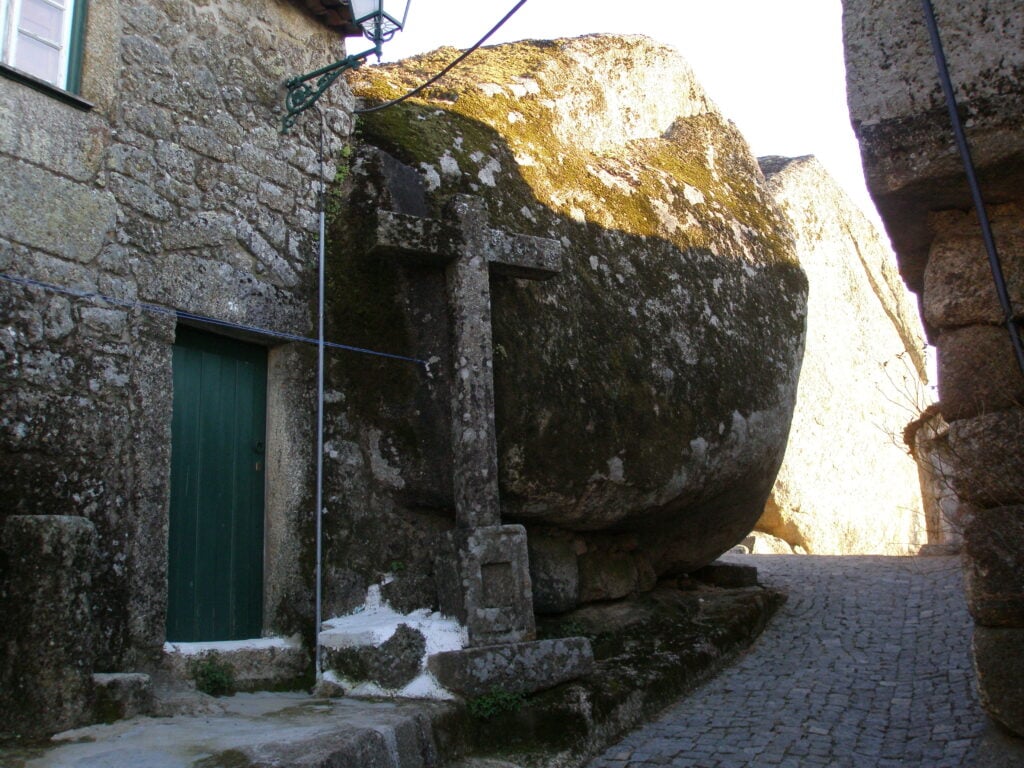
The easiest way to get there is to take the N345 toward Penamacor (also worth a visit). Then take the N332 for about half an hour and, if the fog is not too thick, you should be able to see Monsanto.
The village of Monsanto is divided into two distinct areas. The upper area, where the castle built by the Knights Templar stands, and the lower area where the houses stand.
In the lower part, the highlights are the main church, the Church of Misericórdia, the Torre do Lucano (a.k.a. the clock tower), the Cruzeiro de São Salvador, the Praça dos Canhões viewpoint and the iconic Casa entre Penedos (literally the “house between boulders”, you’ll know it when you see it).
To visit the summit of Monsanto, you can’t avoid a walk along the steep Penedos Juntos trail. The good thing is that along the way you can enjoy the fantastic views from the Penedo do Pé Calvo, visit the Monsanto cave and the castiças furdas (old pigsties).
Once you’re in the upper part, don’t forget to go up and walk around the castle walls, and visit the ruins of the keep, the Chapel of Santa Maria do Castelo, and the Romanesque Chapel of São Miguel.
Idanha-a-Velha
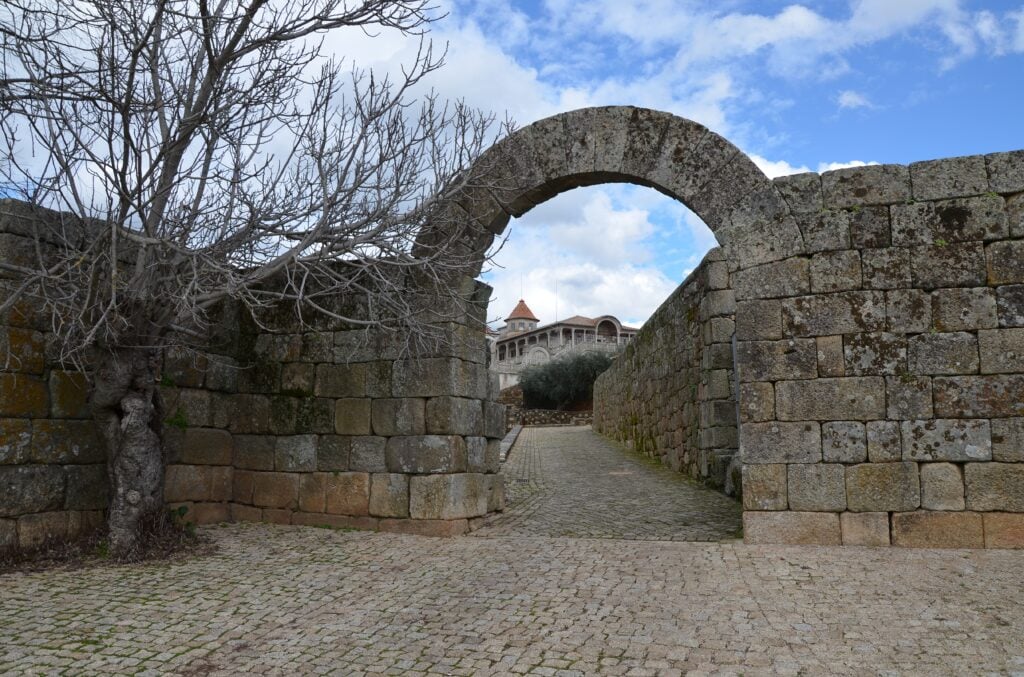
Located just 10 kilometers southwest of Monsanto, it’s incredibly easy to get there since it’s very well indicated.
This is one of the oldest villages in the network of historic villages in Portugal, with a history dating back to the first century BC.
It began as a Roman villa, was integrated into the kingdom of the Visigoths and Suevi after the barbarian invasions (at the time it was known as Egitânia), passed through Muslim hands, and was reconquered by the Christians in the 12th century and donated to the Order of the Templars by (guess what) King Dinis so that it could be rebuilt.
That said, it’s no wonder that every stone in Idanha-a-Velha has a story to tell. And Idanha-a-Velha does have a lot of stones.
The most emblematic sites in Idanha-a-Velha are the Cathedral (where elements of Roman, Paleo-Christian, Visigothic, and Medieval culture coexist), the archaeological remains belonging to the ancient Roman villa, the iconic Templar Tower, the Chapel of São Sebastião, the main church and the pillory, the Roman walls and the Roman bridge over the Pônsul river.
Castelo Novo
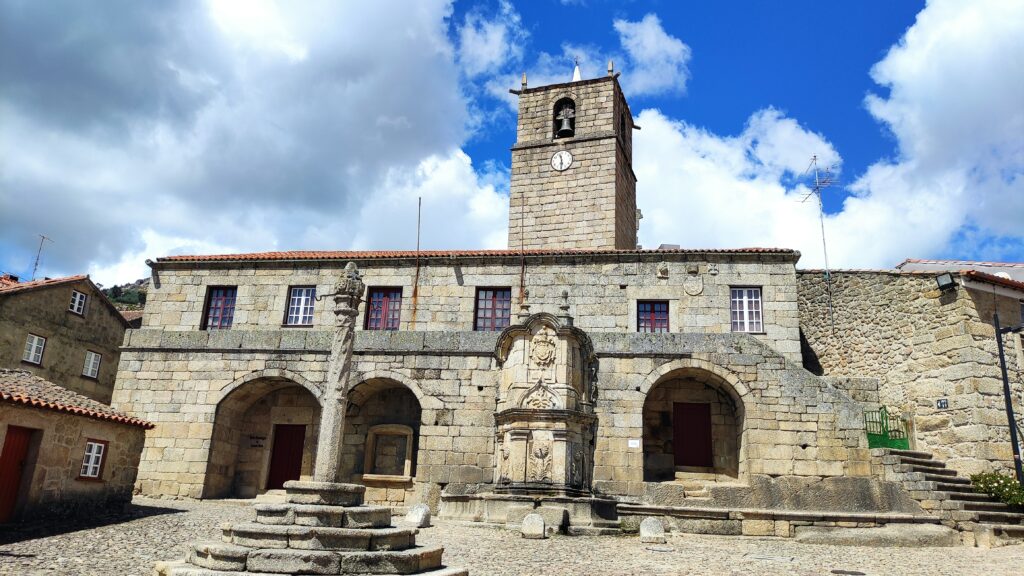
Take the N332, then turn left to both the N239 and the N233 a few minutes later. Once you’re at Lousa, take the N18-7 to get to the A23. You’ll find Castelo Novo on your left.
The village of Castelo Novo is literally nestled on one of the slopes of the slender Serra da Gardunha, in a natural amphitheater landscape that lifts the soul.
Walking through its cobbled streets, bordered by a mixture of humble houses and opulent manor houses, with the sound of water flowing in its fountains as a soundtrack, has left its mark on our memory.
Among the places we most like to visit are the castle and bell tower (built on an impressive granite massif), the Town Hall Square, the main church, the Bica Fountain, and the Gamboas and D. Silvestre manors.
If you’re going in the summer, don’t forget your bathing suit, as there’s a delightful river beach just outside Castelo Novo. If you’re going in April, add at least one day to your tour and go and see the unparalleled spectacle of the cherry blossoms in Serra da Gardunha.
Piódão
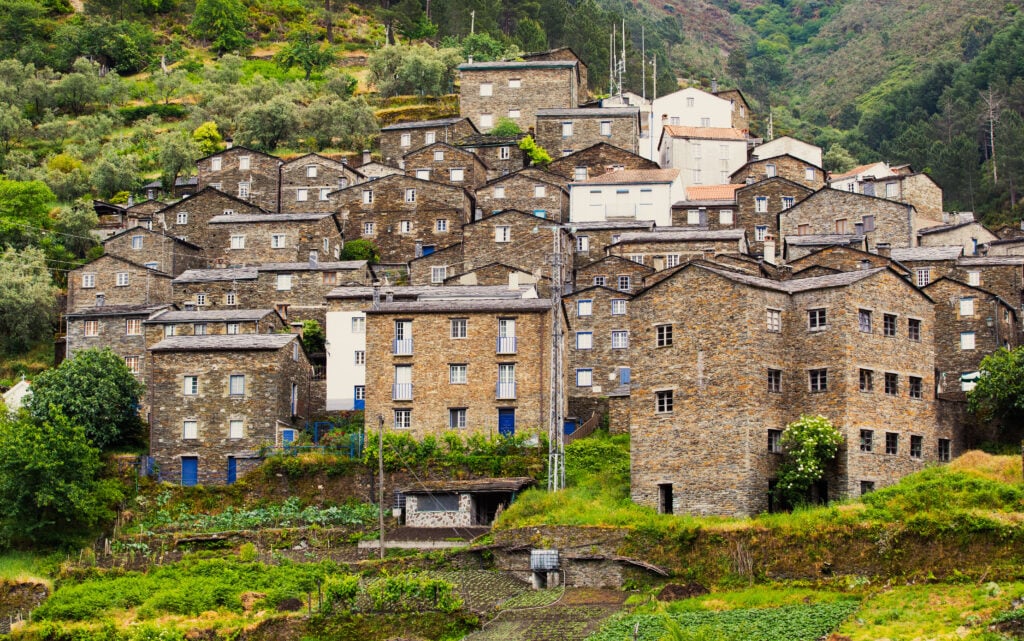
Getting to Piódão from Castelo Novo is kind of a long drive, but a very scenic and well-worth one. Hop back on the A23 and leave it once you reach Tortosendo. Then, take the N18-4 and the N230 headed west. After a very curvy drive, turn left (south) on the CM1134 and Piódão will emerge, hidden behind a curve.
Piódão, also known as Aldeia Presépio, is without a doubt one of the most beautiful and idyllic villages in Portugal. Seeing its black schist houses and slate roofs, with their typical blue-painted doors and shutters, climbing up the hill, will make anyone fall in love. And if you see it at night, with the little lights dancing in the darkness of the hills, you’re liable to swear eternal love.
There’s no doubt that the best thing about Piódão is getting lost in its sloping schist alleys. But still, try to find some time to visit its Museum Center, the sui generis Church of Nossa Senhora da Conceição, and Piódão’s fantastic river beach (if you go in summer, don’t hesitate to take a dip).
Last Thoughts
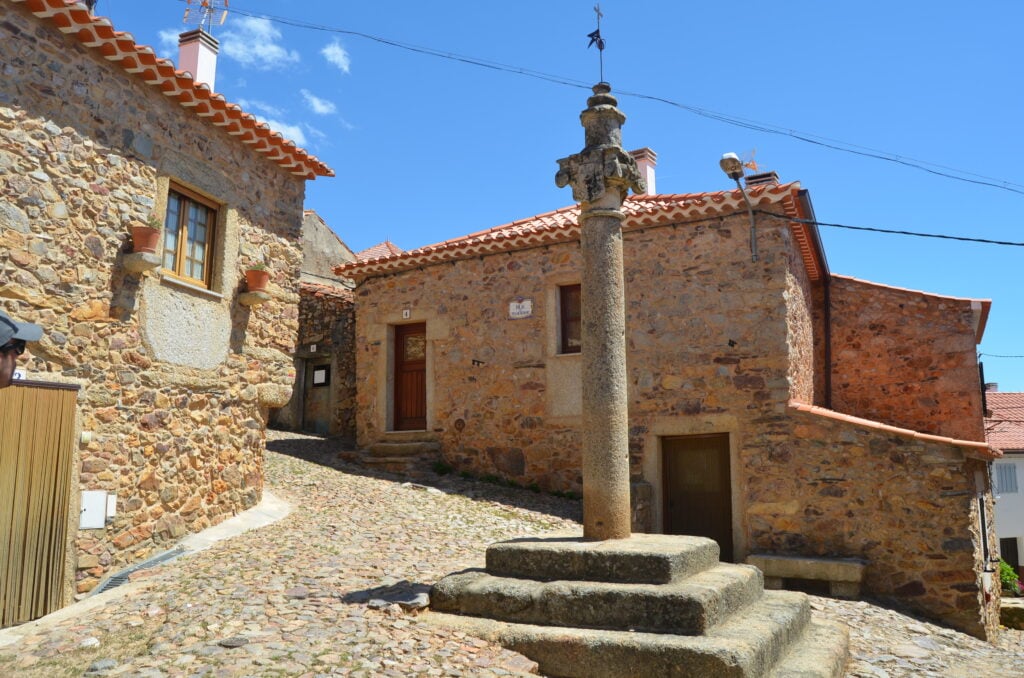
So, what do you think? By now, your leg muscles must be as strong as a marathon runner’s! The Historical Villages are one of my favorite destinations in the country and I try to visit as often as I can as they provide me with a great dose of nature, peace, silence, and history. All of them seem too tiny in the infinity of a globalized world, but they are so full of genuine people.
The Historical Villages serve as a gateway to immersive walking trails, leading you through enchanting woods where Portugal laurel and holly thrive. Explore layered valleys, remnants of glaciers, depressions, and water streams that enrich agricultural fields. Find waterfalls and unique rocky formations as you embark on this captivating journey.
And, hopefully, they’ll open your curiosity to visit some other locations off the beaten path. Places like Penedono, Folgosinho, Pinhel, Penamacor, or Penha Garcia are all in this region and, even if they are not officially part of this network, they’re well worth your visit. After that, you can head South, and explore another quaint network of villages famous for their white walls and red rooftops. I’m talking, of course, about Alqueva’s Riverside Villages.
I’ll see you there!

